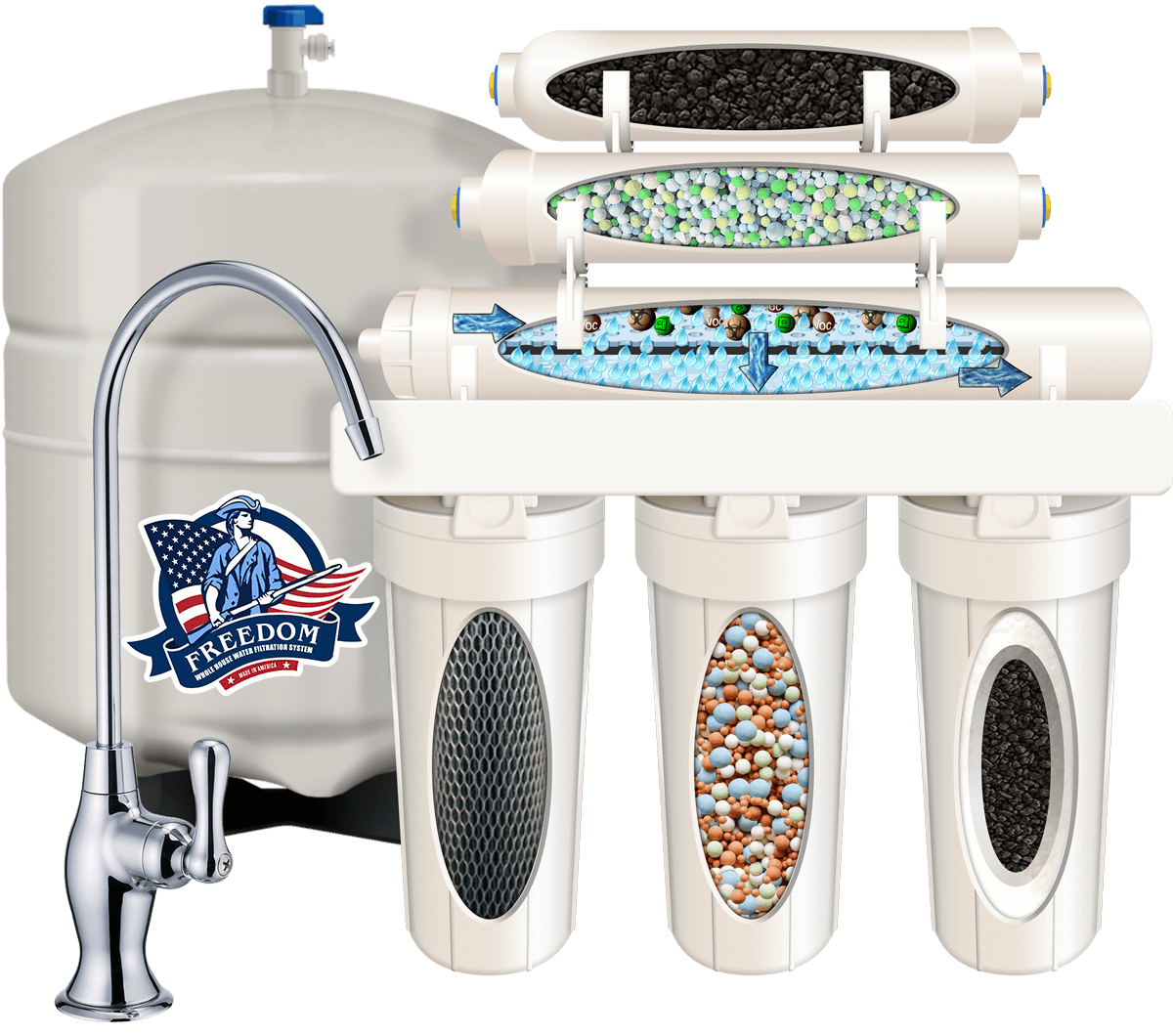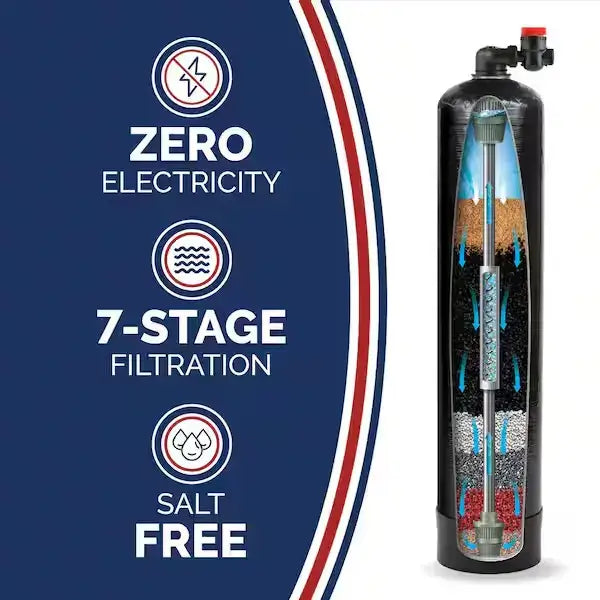-
(11-Stage) Reverse Osmosis Alkaline w/Quantum Disinfection™Regular price $1,495.00
$1,595.00Sale price -
-
-
Understanding Chromium-6 in Water
What is Chromium-6?
Chromium-6, also known as hexavalent chromium, is a toxic heavy metal and an industrial byproduct. It gained widespread attention following the famous Erin Brockovich case, where it was discovered that this dangerous contaminant was present in the water supply of several communities. Chromium-6 can enter water supplies through industrial runoff, especially from factories that produce stainless steel, textiles, or use chromium-based chemicals in their processes. It can also naturally occur in groundwater through the erosion of chromium deposits in rocks.
Why is Chromium-6 a Concern?
Chromium-6 is a known carcinogen when inhaled or ingested in high quantities over long periods. Even in small concentrations, it poses serious health risks:
- Cancer: Prolonged exposure to drinking water contaminated with Chromium-6 has been linked to increased risks of stomach, liver, and lung cancers.
- Other Health Effects: Chromium-6 exposure may lead to skin irritation, gastrointestinal issues, and complications with the liver and kidneys.
- Regulatory Concerns: While total chromium (which includes both Chromium-3, an essential nutrient, and Chromium-6) is regulated by the EPA, specific limits for Chromium-6 remain a subject of ongoing debate. Some states, like California, have stricter regulations for Chromium-6 levels in drinking water.
How Does Chromium-6 Enter Water Supplies?
Chromium-6 contamination typically comes from:
- Industrial Waste: Factories using chromium in manufacturing or for producing dyes, pigments, and other chemicals can discharge waste that contaminates water supplies.
- Natural Deposits: In some areas, Chromium-6 can seep into groundwater from naturally occurring deposits of chromium-rich rocks.
- Improper Disposal: Poor management of industrial waste can lead to Chromium-6 leaching into local water systems, particularly in regions with aging infrastructure.
How to Remove Chromium-6 from Water
Removing Chromium-6 from drinking water is essential to reduce health risks. Here are some effective treatment solutions:
- Reverse Osmosis (RO): Reverse osmosis is one of the most effective methods for removing Chromium-6 from water. RO systems force water through a semi-permeable membrane, filtering out Chromium-6 and other harmful contaminants.
- Ion Exchange: This method replaces harmful ions like Chromium-6 with harmless ions, effectively reducing the concentration of the contaminant in your drinking water.
- Activated Carbon Filters with Special Resin: Some advanced activated carbon filters are designed to target and remove heavy metals, including Chromium-6, by using a specialized resin that binds to the metal ions.
The Importance of Water Testing for Chromium-6
If you live in an area with known industrial activity or have concerns about water quality, it's essential to test your water for Chromium-6. Comprehensive testing will help identify contamination levels and guide you in selecting the best filtration method to ensure safe drinking water for your household.











